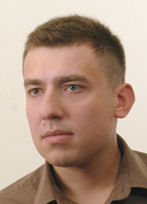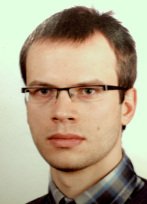Spis treści
2011 Polish Artificial Intelligence Society Award for the Best Ph. D. Dissertation in Artificial Intelligence
Dr. Marcin Dziubiński, Warsaw University
„Complexity issues in multimodal logics for multiagent systems”
supervisor: dr hab. Barbara Dunin-Kęplicz
The dissertation studies computational complexity of satisfiability problem for TeamLog – a formalism for cooperating agents designed by Barbara Dunin-Kęplicz and Rineke Verbrugge. It shows that TeamLog complexity is exponential. Consequently language restrictions are sought. Novel and universal modal context restriction is proposed. It obtains sufficiently expressive TeamLog fragments and enables usage of other restrictions or heuristic approaches.
Honourable mention in the competition for the 2011 Polish Artificial Intelligence Society Award for the Best Ph. D. Dissertation in Artificial Intelligence
Dr. Wojciech Jaśkowski, Poznań University of Technology
„Algorithms for Test-based Problems”
supervisor: dr hab. inż. Krzysztof Krawiec
The dissertation is devoted to a subclass of optimization problems, characterized by the fact that potential solutions are evaluated on a (usually large) set of elementary tests. The work proposes new computationally effective co-evolutionary algorithms to solve such problems. Obtained results have applications in learning game strategies, machine learning, and combinatorial optimization.
Honourable mention for the Best Applied Thesis in the competition for the 2011 Polish Artificial Intelligence Society Award for the Best Ph. D. Dissertation in Artificial Intelligence
Dr. Joanna Czajkowska, Politechnika Śląska
„Parameterization and 3D Segmentation of Bone Tumours in Magnetic Resonance Images„
supervisor: prof. dr hab. inż. Ewa Piętka
Thesis is available on request from the author.
The dissertation presents a three dimensional method of bone tumour segmentation in magnetic resonance images. The segmentation method presented is applicable to different types of bone tumours and lesions. It is also insensitive to their location in human body. The proposed segmentation method is based on Kernelized Fuzzy C-Means clustering, Gaussian Mixture Model and Relative Fuzzy Connectedness analysis.


